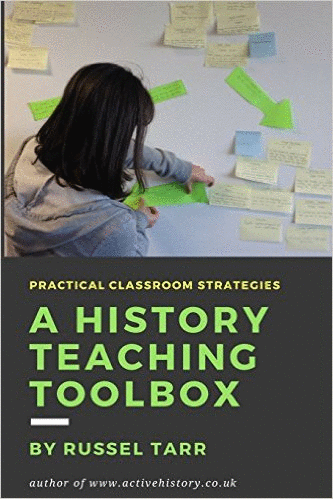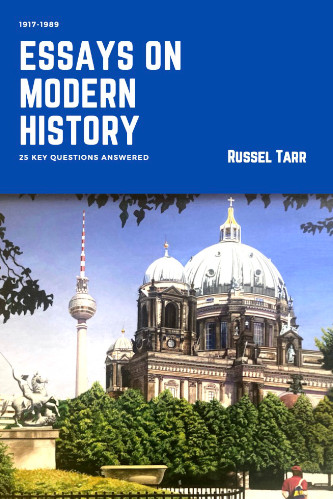World History teaching resources for the high school classroom: lesson plans, worksheets, quizzes and simulation games for KS3, IGCSE, IB and A-Level teachers.
A. Introduction and Overview |
||
| 1. | Study Guide: Tsarist and Revolutionary Russia, c.1890-1917 Why is this period so important to know about? A brief introductory handout outlining the historical significance of the topic and the main questions for investigation. |
|
| 2. | A Virtual Tour around Tsarist Russia! [interactive] This is a great way of familiarising students with the issues and personalities of Russia on the eve of World War One before they move on to the step-by-step analysis in the following worksheets. With 65 locations and genuine colour photographs. Students can choose from a simpler game, and a more sophisticated one. There is also a worksheet to accompany the adventure, which is lavishly illustrated with GENUINE colour photographs! There is also a Google Earth Tour of Tsarist Russia in 1914. |
|
| 3. | An Overview of the Issues Facing Nicholas II in 1894 This pack can be used by students following their completion of the simulation to produce a mindmap and / or a powerpoint presentation about the state of Russia when Nicholas II came to the throne. |
|
| 4. | The Geography of Imperial Russia [interactive] This task, which is best set as a homework exercise, involves getting students producing a map of Imperial Russia which highlights the range and location of nationalities, climates, time zones and natural resources. In this way they can reflect on the idea that maybe the problems of Imperial Russia were insoluble. An interactive dimension is provided to this activity if students make use of the Google Earth Tour of Tsarist Russia in 1914. |
|
| 5. | The Personality of Nicholas II Students should now have a good understanding of the main issues and personalities relevant to the topic. This worksheet pushes things forward by considering the particular contribution of Nicholas II's personality to the situation by looking at some primary source accounts and inviting students to form their own judgement. |
|
| 6. | Overview of the Reign of Tsar Nicholas II, 1894-1917 Students now spend a lesson researching different aspects of the reign of Tsar Nicholas II. Each topic area has a brief introduction, and individual students take responsibility for reporting back to the class with their findings. This helps to break the topic up nicely before they start to look at each area in more detail. |
|
B. The Towns: Industry under Sergei Witte |
||
| 1. | EITHER: Witte's Dilemma: An Overview of Industrial Developments in the Reign of Nicholas II OR: Nicholas II: Industrial Developments |
|
| 2. | Economic Effects of Industrialisation Students are provided with some raw economic data relating to the results of industrialisation in Imperial Russia. They have to draw conclusions regarding success and failure, and try to guess what missing figures in the tables would have been (this is a great way to get students spotting trends in the figures). A teacher helpsheet provides the evidence to complete the gaps. |
|
| 3. | Social Effects of Industrialisation The success or failure of the industrialisation programme can be measured in social as well as in economic terms. This worksheet contains a series of primary sources relating to the living conditions in the towns which allow students to decide whether the economic benefits outweighed the social disadvantages. |
|
C. The 1905 Revolution |
||
| 1. | The Events of 1904-1905: The Russo-Japanese War, Bloody Sunday and the 1905 Revolution [computer activity] In this exercise, students are presented with a wide range of primary source material which "tells the story" of 1904-1905 from a variety of perspectives covering the main topics. Students "cut and paste" the information into the appropriate cells of a table which breaks each event into its causes, events and consequences. |
|
| 2. | The Significance of the 1905 Revolution What was the significance of the 1905 Revolution? Why did it fail? These are important questions to consider, especially given the tendency of examiners to ask why the 1917 Revolutions succeeded when the 1905 Revolution failed. |
|
| 3. | The Reign of Nicholas II (to 1905) [interactive] |
|
D. The Countryside: Agriculture under Peter Stolypin |
||
| 1. | Social Conditions in the Countryside A series of sources and questions outlining the state of agriculture at the time that Peter Stolypin became prime minister. |
|
| 2. | Agricultural Reform under Peter Stolypin In a similar exercise to that relating to Witte's policies for industry, students consider what has caused each problem that is listed, they then suggest what should be done to solve it, then compare this to what Stolypin actually did to form an overall asessment. A teacher helpsheet provides information about what Stolypin's responses actually were in reality. |
|
| 3. | The Assassination of Peter Stolypin A primary source account. Was Stolypin the last hope that the Tsarist regime had to survive? Would his reforms have succeeded given "Twenty years of peace"? |
|
E. Political Developments |
||
| 1. | Hegel, Marx and Dialectics An accessible introduction to the concepts of Hegelian and Marxist Dialectic which will stand students in good stead for 20th Century Soviet history. |
|
| 2. | Political Parties in Russia before 1914: Full Version Political Parties in Russia before 1914: Abridged Version I personally use the abridged version with my students these days, but for students who desire a more thorough analysis, the full version may be more to their tastes. Students are encouraged to look at the pedigree of each political party in terms of its peasant, proletarian or liberal credentials and spot overlaps. |
|
| 3. | The Duma Era: 1906-1914 Outlines the Tsar's relationship with the political parties who took part in the representative assembly he set up in the October Manifesto. How would he justify undermining their powers in the Fundamental Laws and his increasingly undemocratic voting system? |
|
| 4. | The Rise of Rasputin This worksheet develops student understanding of the personal weaknesses of the Tsar and the Tsarina but focuses most heavily on the damage done to the reputation of the regime by Gregory Rasputin, the "mad monk". |
|
| 5. | Was Tsarist Russia on the verge of collapse in 1914? An essay planning task. How could such a written piece be structured? Some general advice is followed by a "skeleton" essay framework for those students lacking the confidence to structure a piece themselves at this early stage. |
|
| 6. | Debate: Was Tsarist Russia on the verge of collapse in 1914? After the above essay question has been set, students could prepare for and deliver this debate, the findings of which can then feed into their set essays. |
|
| 8. | ||
F. The Impact of World War One and the February Revolution |
||
| 1. | The Impact of World War One Upon Russia: Note-taking exercise Obviously an important factor in the downfall of the regime, although exactly how important depends on the conclusions students reached in their written essay. In this task, students are provided with a basic overview of the main events in the war, and then the teacher provides several ways in which students could organise their notes. The purpose of this lesson is to develop note-taking skills rather than allowing students to feel that they can rely purely on worksheets. |
|
| 2. | The Murder of Rasputin: Analyis of the Hollywood Movie At this point, I watch the final 35 minutes or so of the "Rasputin" Feature Film starring Alan Rickman (available from Amazon here). This worksheet follows the viewing and encourages students to analyse the film as they would any other source - what has been left out? what has been deliberately falsified? what events have been "spun" and how? A primary source account with associated tasks relating to the murder can be found here. |
|
| 3. | The February Revolution of 1917 Students take a detailed timeline of events and place each event into one of three columns: political damage, military damage, socio-economic damage. From this they decide when exactly the Tsar lost control of the politicians, the armed forced and the ordinary people. They then put each of these crises in a mid-term perspective (using the work done in the previous lesson) and then a long-term perspective (using notes from the computer simulation and earlier worksheets). |
|
| 4. | How similar were Alexander II, Alexander III and Nicholas II? Obviously this venn diagram worksheet is only appropriate if students have covered the previous two Tsars; otherwise this worksheet is not necessary. |
|

© 1998-2025 Russel Tarr, ActiveHistory.co.uk Limited (Reg. 6111680)
1 Torrin Drive, Shrewsbury, Shropshire, SY3 6AW, England
Privacy Policy | Contact







